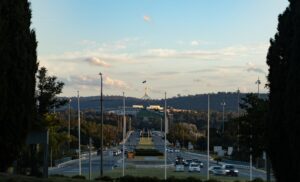
Free-floating planets, known as rogue planets, may have the ability to create their own moon systems. Recent observations from the James Webb Space Telescope (JWST) indicate that these planetary-mass objects, which range from five to ten times the mass of Jupiter, possess disks rich in crystalline silicate. This finding is akin to the disks observed around nascent stars, suggesting a similar process of moon formation in these unanchored celestial bodies.
Astrophysicists led by Belinda Damian from the University of St Andrews conducted an analysis of eight rogue planets located in the Orion Nebula. They detected hydrocarbon and silicate grains within the disks, which displayed signs of dust growth and crystallization. Their research offers new insight into how these rogue planets might develop miniature planetary systems, potentially akin to our Solar System but on a smaller scale.
Insights from JWST Observations
The discovery of these rogue planets adds to the growing catalog of celestial phenomena unveiled by JWST. These free-floating planetary-mass objects, or FFPMOs, exist in areas dense with star formation, allowing for a unique study of planetary development in isolated conditions. Astronomer Aleks Scholz emphasized the significance of these findings, stating, “Objects with masses comparable to those of giant planets have the potential to form their own miniature planetary systems.”
The team’s observations reveal that the disks surrounding FFPMOs are not merely remnants of their formation but may actively contribute to moon formation. The study suggests that these disks could behave similarly to those surrounding stars, indicating that planetary system formation is not limited to star-hosted environments.
Implications for Planetary Science
Although concrete evidence of moons outside our Solar System has yet to be found, the findings from this research imply that the building blocks for moon systems could exist around these rogue planets. Damian noted, “These discoveries show that the building blocks for forming planets can be found even around objects that are barely larger than Jupiter and drifting alone in space.”
This revelation opens up new questions regarding the nature of planetary formation. It suggests that the mechanisms driving the creation of moons might be universal, extending beyond traditional star systems. The potential for rogue planets to host complex systems of moons or even rings similar to those of Saturn or Jupiter presents an exciting frontier in astronomy.
The complete research has been published in the journal Astronomy & Astrophysics, paving the way for further studies into the elusive nature of rogue planets and their capacity for moon formation. As more observations are made, the scientific community anticipates uncovering further details about these intriguing celestial wanderers.






